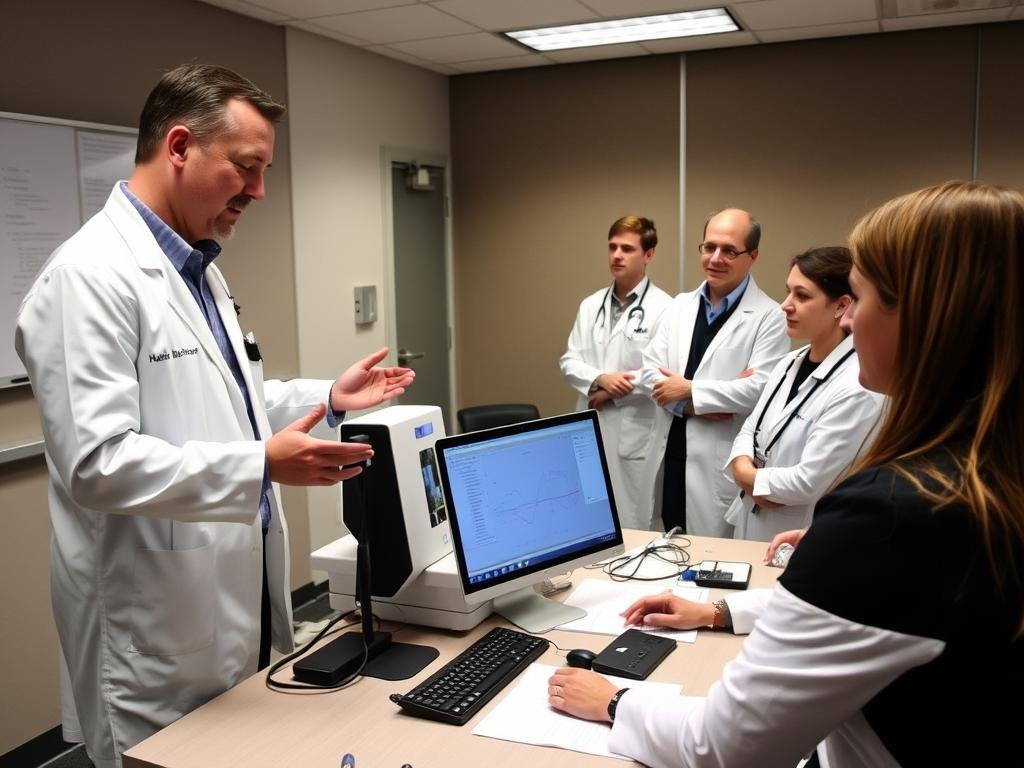The Quantum Resonance Magnetic Analyzer represents a significant advancement in non-invasive diagnostic technology. This sophisticated device utilizes quantum physics principles to measure electromagnetic signals from the human body, providing insights into various health parameters. For healthcare professionals and technology enthusiasts seeking to understand this innovative tool, knowing its internal components is essential. This technical exploration will unveil the critical elements that power these analyzers and how they work together to deliver comprehensive health assessments.
Purpose and Applications of Quantum Resonance Magnetic Analyzer
Modern Quantum Resonance Magnetic Analyzer in clinical use
The Quantum Resonance Magnetic Analyzer (QRMA) serves as a non-invasive diagnostic tool designed to detect subtle energy imbalances within the body. By analyzing the electromagnetic waves emitted by cells, these devices aim to identify potential health concerns before they manifest as clinical symptoms.
Primary Applications Include:
- Preliminary health screenings in clinical settings
- Monitoring of chronic conditions and treatment responses
- Wellness assessments in holistic health practices
- Research applications for studying bioelectromagnetic patterns
- Complementary diagnostics alongside traditional medical tests
These analyzers have gained popularity in integrative medicine practices, wellness centers, and among health-conscious individuals seeking comprehensive health insights. While not intended to replace conventional medical diagnostics, they provide supplementary information that can guide preventive health strategies.
Component 1: Electromagnetic Sensor Array
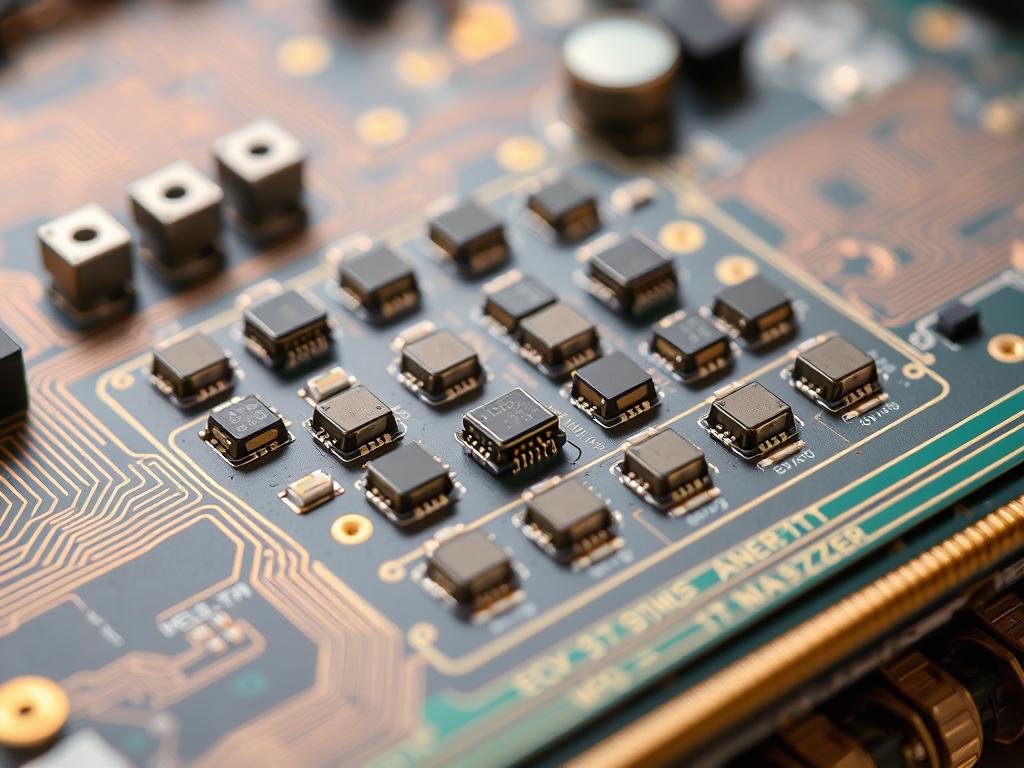
High-precision electromagnetic sensor array
At the heart of every Quantum Resonance Magnetic Analyzer lies its electromagnetic sensor array. This sophisticated component functions as the device’s primary interface with the human body, capturing the subtle electromagnetic signals emitted by cells and tissues.
Technical Specifications:
| Parameter |
Specification |
Function |
| Frequency Range |
0.1 Hz – 100 kHz |
Captures full spectrum of bioelectrical signals |
| Sensitivity |
±0.05 μV |
Detects minute voltage fluctuations |
| Sensor Material |
Silver-palladium alloy |
Optimizes conductivity and biocompatibility |
| Contact Surface |
Ergonomic hand electrode |
Maximizes signal acquisition comfort |
Think of the sensor array as a highly tuned radio antenna, capable of receiving extremely weak signals across multiple frequencies simultaneously. Unlike conventional electrodes that measure direct electrical activity (like an ECG), these sensors detect the magnetic component of electromagnetic waves, providing different and complementary information about cellular activity.
Component 2: Quantum Signal Processor
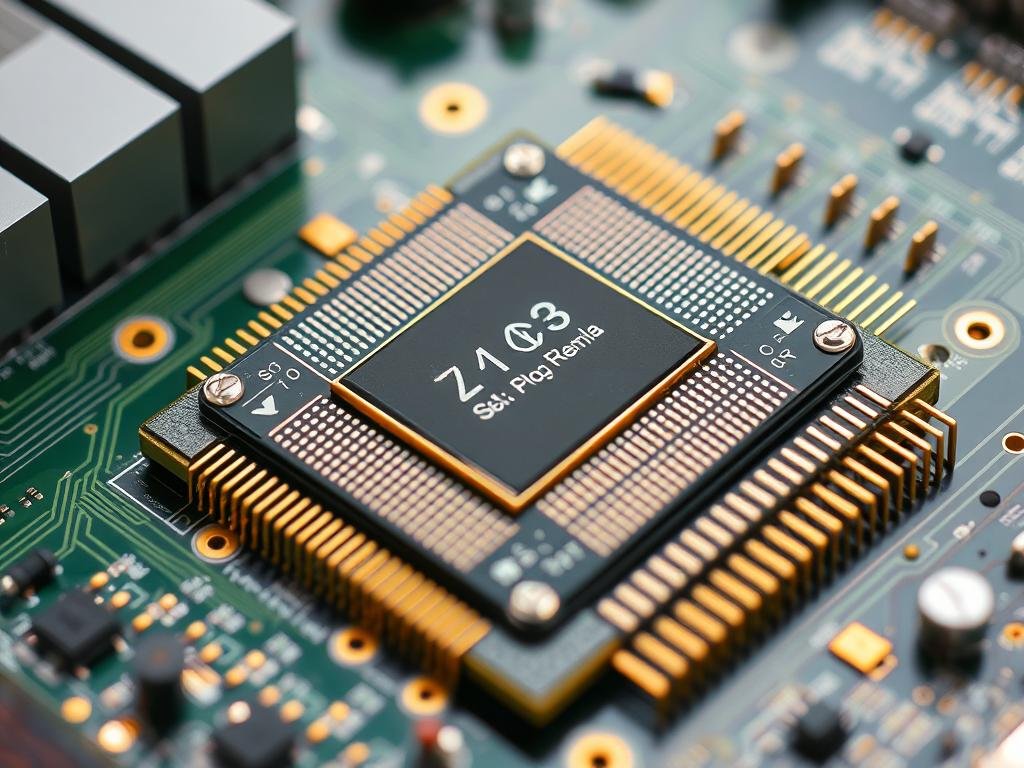
Advanced quantum signal processor with integrated circuits
The quantum signal processor transforms raw electromagnetic data into analyzable digital information. This specialized microprocessor employs proprietary algorithms to filter, amplify, and interpret the complex waveforms captured by the sensor array.
Key Features:
- High-speed analog-to-digital conversion (24-bit resolution)
- Real-time signal processing with 500 MHz clock speed
- Adaptive noise cancellation algorithms
- Parallel processing architecture for simultaneous multi-parameter analysis
- Low power consumption (typically 2.5W during operation)
The signal processor functions similarly to how a sound engineer’s mixing board works with audio signals. It isolates important “frequencies” from background noise, amplifies weak signals, and balances the various inputs to create a coherent data stream. The difference is that instead of working with audible sounds, it processes electromagnetic signals in the micro and nanovolt range.
Component 3: Bioresonance Module
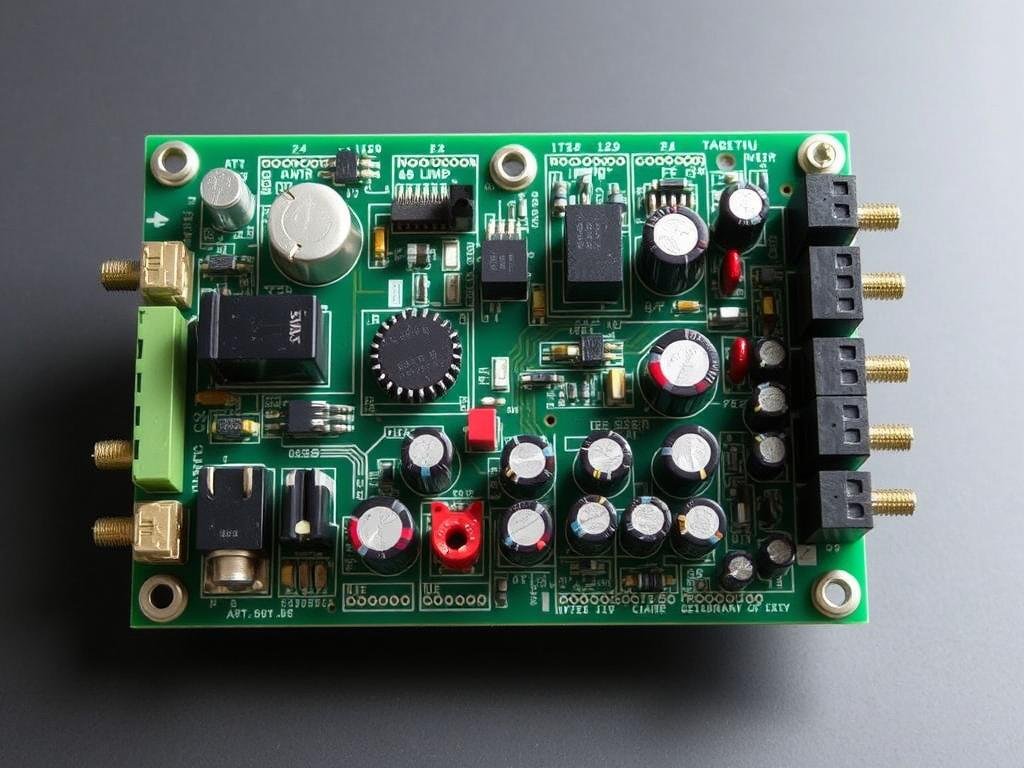
Precision-engineered bioresonance module with frequency generators
The bioresonance module represents the theoretical foundation of quantum resonance technology. This component generates specific frequencies that interact with the body’s own electromagnetic field, creating resonance patterns that can be measured and analyzed.
Technical Specifications:
| Feature |
Capability |
Clinical Relevance |
| Frequency Generation |
0.1 Hz – 50 MHz with 0.01 Hz precision |
Matches cellular resonance frequencies |
| Waveform Types |
Sine, square, triangle, and complex modulated |
Targets different tissue and cell types |
| Harmonic Analysis |
Up to 512 harmonic frequencies |
Identifies subtle energy imbalances |
| Resonance Detection |
±0.002% frequency accuracy |
Ensures reliable repeated measurements |
The bioresonance module operates much like a tuning fork. When a tuning fork of a specific frequency is struck near another of the same frequency, the second begins to vibrate in sympathy. Similarly, this module emits precise frequencies and measures how the body’s cells and tissues respond, revealing information about their functional state.
Component 4: Reference Database and AI Analysis System
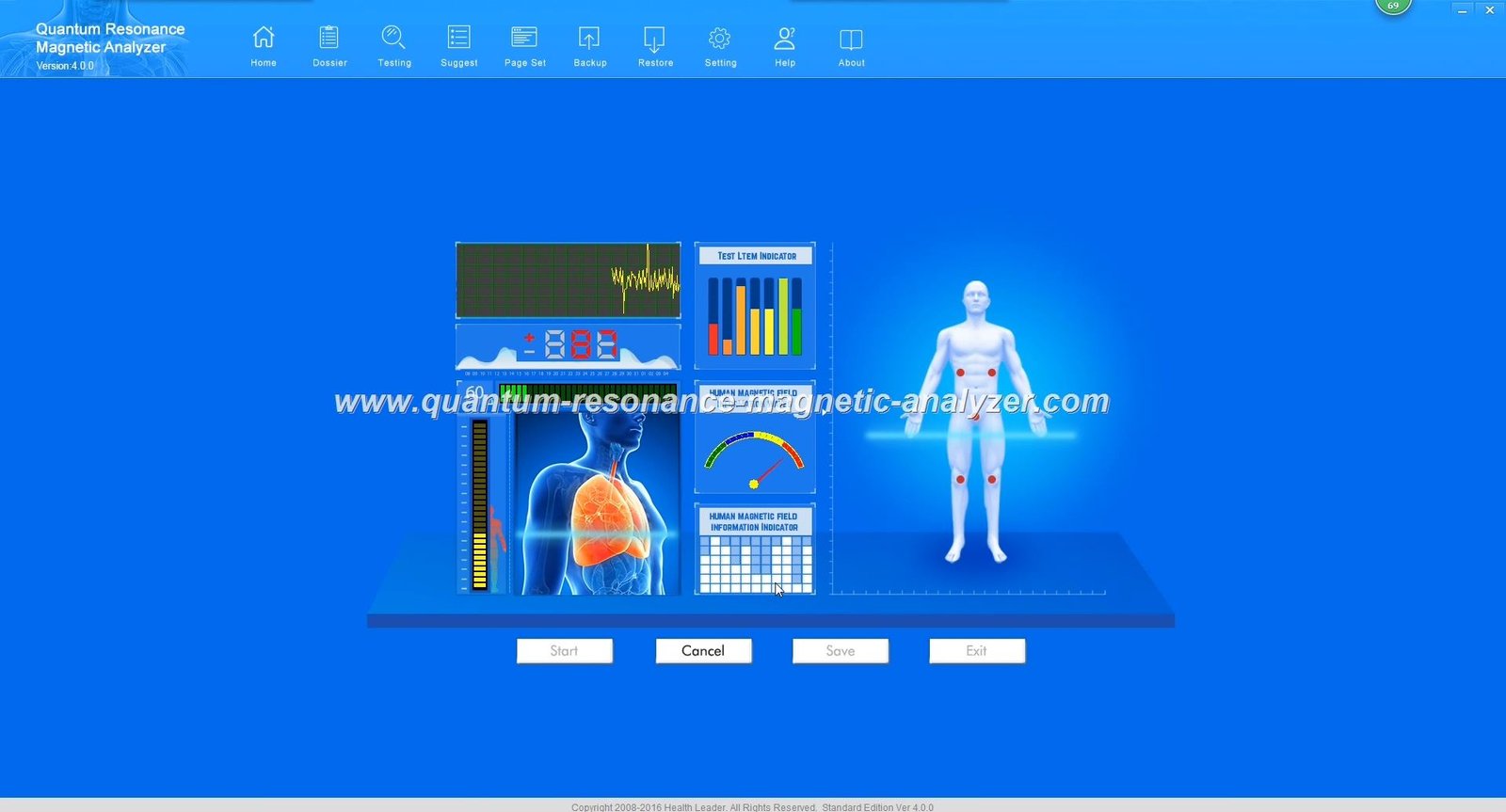
Advanced database and AI analysis interface displaying comparative health metrics
The reference database and AI analysis system form the interpretive brain of the Quantum Resonance Magnetic Analyzer. This component contains extensive libraries of electromagnetic patterns associated with various health states, allowing for comparative analysis of patient data.
Key Components:
- Comprehensive database of over 30,000 reference patterns
- Machine learning algorithms for pattern recognition and analysis
- Neural network trained on millions of clinical data points
- Adaptive learning system that improves with each analysis
- Multi-parameter correlation engine for holistic assessment
This system functions similarly to how facial recognition software works. Just as facial recognition compares key points on a face to a database of known individuals, the analyzer’s AI system compares the patient’s electromagnetic signature to its database of reference patterns, identifying similarities and differences that may indicate specific health conditions.
Component 5: Human-Machine Interface
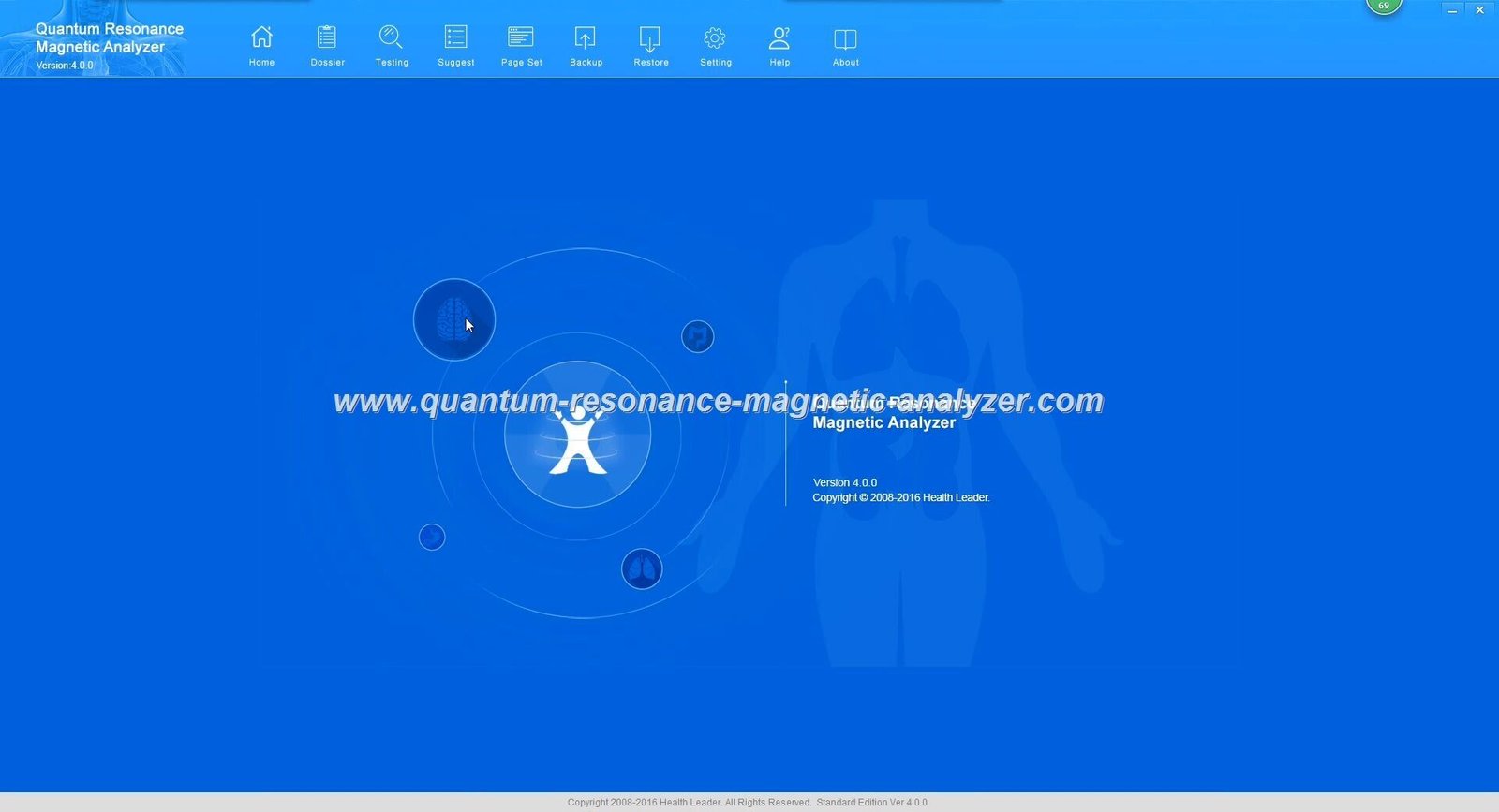
Intuitive human-machine interface with 3D visualization capabilities
The human-machine interface transforms complex electromagnetic data into comprehensible visual reports. This component includes both hardware (display screens, input devices) and software elements that make the analyzer’s findings accessible to practitioners and patients alike.
Interface Features:
Hardware Elements:
- High-resolution color display (minimum 1920×1080)
- Touch-sensitive controls for intuitive operation
- Ergonomic hand sensors with comfortable grip
- USB/Bluetooth connectivity for data export
- Compact, portable design for clinical mobility
Software Elements:
- 3D anatomical visualization engine
- Customizable report generation
- Trend analysis for longitudinal monitoring
- Multi-language support (typically 15+ languages)
- Cloud integration for secure data storage
The interface acts as a translator, converting the “language” of electromagnetic signals into visual representations that humans can understand. Like how weather radar transforms atmospheric data into colorful maps showing precipitation patterns, the analyzer’s interface creates visual representations of the body’s electromagnetic landscape.
Synergy of Components: How They Work Together
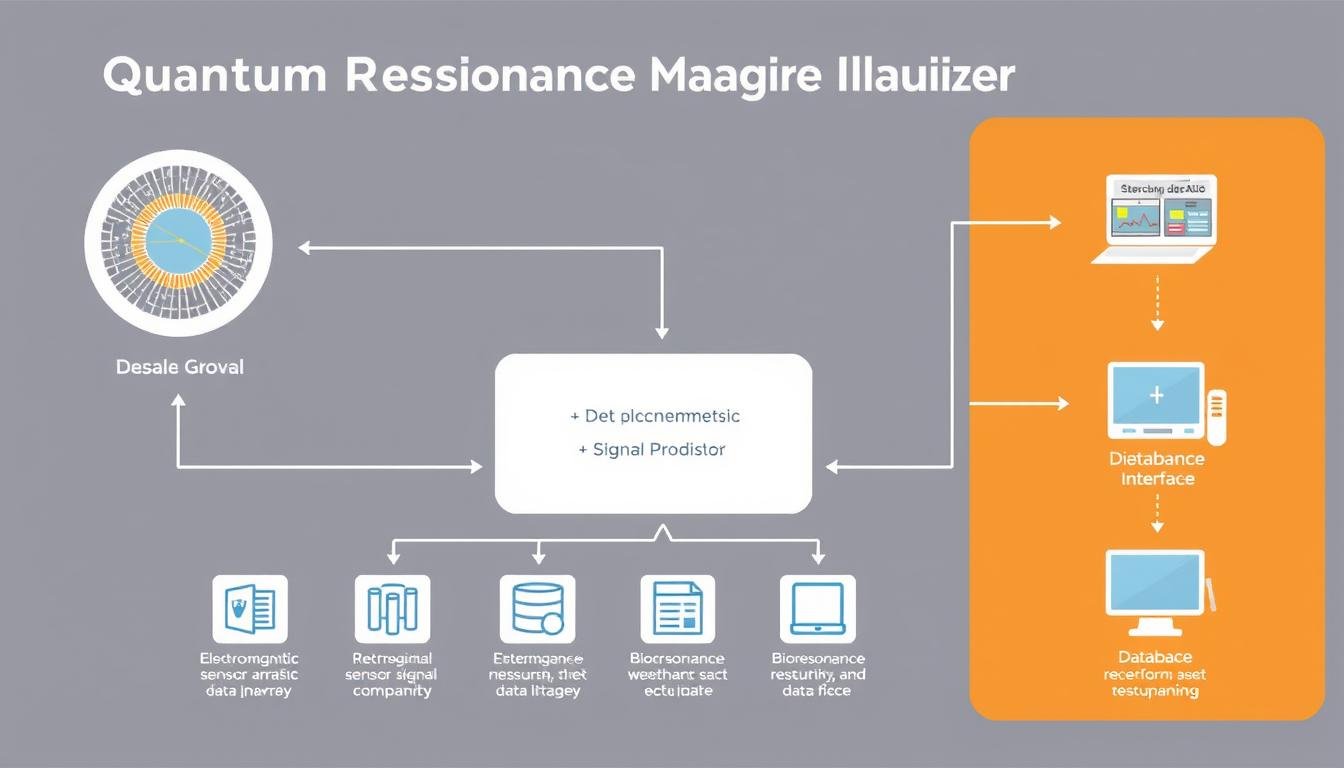
[Workflow Infographic] Component interaction in a Quantum Resonance Magnetic Analyzer
The true power of the Quantum Resonance Magnetic Analyzer emerges from the seamless integration of its components. The workflow follows a logical sequence that transforms subtle biological signals into actionable health insights:
- Signal Acquisition: The electromagnetic sensor array captures the body’s weak electromagnetic emissions when the patient holds the hand sensors or places them on specific acupuncture points.
- Signal Processing: The quantum signal processor filters, amplifies, and digitizes these raw signals, extracting meaningful patterns from background noise.
- Resonance Testing: The bioresonance module emits test frequencies and measures the body’s response, creating a comprehensive frequency response profile.
- Pattern Analysis: The database and AI system compare the patient’s electromagnetic signature against thousands of reference patterns, identifying potential imbalances.
- Visualization: The human-machine interface transforms this complex analysis into intuitive reports with actionable insights for healthcare providers and patients.
This integrated workflow can be compared to an orchestra, where each instrument (component) plays its unique part, but the true beauty emerges from their harmonious interaction. The precision timing and coordination between components allow the analyzer to produce reliable, repeatable results across multiple testing sessions.
Comparison with Traditional Diagnostic Tools
| Feature |
Quantum Resonance Magnetic Analyzer |
Traditional Diagnostic Tools |
Advantage |
| Invasiveness |
Non-invasive, no blood or tissue samples required |
Often requires blood draws, tissue samples |
Patient comfort, immediate testing |
| Speed |
Complete analysis in 60-90 seconds |
Hours to days for lab results |
Immediate feedback, faster interventions |
| Comprehensiveness |
Analyzes multiple body systems simultaneously |
Typically focused on specific parameters |
Holistic health assessment |
| Early Detection |
May detect energetic imbalances before clinical symptoms |
Often requires measurable physiological changes |
Potential for earlier intervention |
| Scientific Validation |
Emerging research, limited clinical trials |
Extensive peer-reviewed validation |
Traditional methods have stronger evidence base |
While traditional diagnostic tools like blood tests, imaging studies, and physical examinations remain the gold standard in clinical medicine, quantum resonance technology offers complementary insights that may enhance overall health assessment. The ideal approach integrates both conventional and innovative diagnostic methods for comprehensive patient care.
Future Developments in Quantum Resonance Technology

Concept rendering of next-generation quantum resonance technology
The field of quantum resonance analysis continues to evolve rapidly, with several promising developments on the horizon:
Emerging Advancements
- Miniaturization of components for increased portability
- Enhanced AI capabilities with deeper pattern recognition
- Integration with wearable technology for continuous monitoring
- Expanded reference databases with greater demographic diversity
- Improved clinical validation through larger research studies
Challenges to Address
- Standardization of testing protocols across devices
- Stronger scientific validation through peer-reviewed research
- Integration with conventional medical records systems
- Regulatory approval in more jurisdictions
- Wider acceptance within mainstream medical communities
As quantum physics and artificial intelligence continue to advance, we can expect quantum resonance technology to become more precise, accessible, and clinically validated. The integration of these analyzers with other digital health technologies promises to create more comprehensive health monitoring ecosystems.
Conclusion
The Quantum Resonance Magnetic Analyzer represents a fascinating intersection of quantum physics, bioelectromagnetics, and artificial intelligence. By understanding its core components—from the electromagnetic sensor array to the sophisticated AI analysis system—healthcare professionals can better appreciate both the capabilities and limitations of this technology.
While not intended to replace conventional diagnostics, these devices offer a complementary approach to health assessment that may provide valuable insights, particularly in preventive and integrative medicine contexts. As research continues and technology evolves, quantum resonance analysis may play an increasingly important role in the future of healthcare.
Explore Quantum Resonance Technology Further
Interested in learning more about how Quantum Resonance Magnetic Analyzers can enhance your clinical practice or research? Request our comprehensive technical specifications package or schedule a personalized demonstration.
Request Technical Specifications
Schedule a Demonstration
Additional Resources
Technical Documentation
Access detailed technical specifications, calibration procedures, and maintenance guidelines for quantum resonance technology.
Research Library
Explore peer-reviewed studies, clinical trials, and research papers examining the efficacy and applications of quantum resonance analysis.
Professional Training
Register for comprehensive training programs on quantum resonance technology operation, interpretation, and clinical application.











